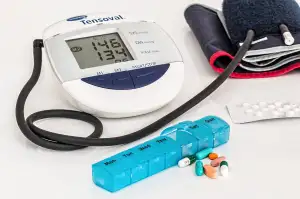Revitalizing Recovery: The Power of Post-Mastectomy Yoga for Healing and Wellness

- Benefits of practicing yoga after mastectomy
- Gentle yoga poses for post mastectomy recovery
- Breathing exercises to promote healing and relaxation
- Mindfulness and meditation techniques for emotional well-being
- Precautions and modifications for practicing yoga after mastectomy
- Testimonials from breast cancer survivors who have benefited from post mastectomy yoga
Post mastectomy yoga is a specialized form of yoga that focuses on healing and wellness for women who have undergone a mastectomy. This gentle and therapeutic practice aims to support physical, emotional, and mental recovery after breast cancer surgery. By combining gentle movements, breathing exercises, mindfulness techniques, and meditation, post mastectomy yoga offers a holistic approach to healing and helps women regain strength, flexibility, and confidence in their bodies. It provides a safe space for survivors to reconnect with themselves and find inner peace amidst the challenges of their journey.
Benefits of practicing yoga after mastectomy
Practicing yoga after mastectomy offers numerous benefits for physical and emotional healing. Research has shown that yoga can help improve range of motion, flexibility, and strength in the chest, shoulders, and arms. It also aids in reducing lymphedema, a common side effect of breast cancer treatment. Additionally, yoga promotes relaxation, reduces stress levels, and enhances overall well-being. Regular practice can boost self-esteem and body image, helping survivors regain confidence and embrace their new bodies.
Gentle yoga poses for post mastectomy recovery
Gentle yoga poses can play a crucial role in the recovery process after mastectomy. These poses focus on promoting flexibility, strength, and overall well-being. One such pose is the Child's Pose (Balasana), which helps to stretch the back, shoulders, and chest muscles while providing a sense of relaxation. The Cat-Cow Pose (Marjaryasana-Bitilasana) helps to improve spinal mobility and gently stretches the chest muscles. The Warrior II Pose (Virabhadrasana II) strengthens the legs and core while opening up the chest area. Additionally, the Bridge Pose (Setu Bandhasana) helps to strengthen the back and glutes, improving posture and stability. Practicing these gentle yoga poses can aid in physical recovery and provide a sense of empowerment for post-mastectomy individuals.
Breathing exercises to promote healing and relaxation
Breathing exercises play a crucial role in promoting healing and relaxation after mastectomy. Deep, mindful breathing helps to increase oxygen flow throughout the body, reducing stress and anxiety levels. One effective technique is diaphragmatic breathing, also known as belly breathing. To practice this, sit or lie down comfortably and place one hand on your abdomen. Take a slow, deep breath in through your nose, allowing your belly to rise as you fill your lungs with air. Exhale slowly through your mouth, feeling your abdomen lower as you release the breath. Repeat this exercise for several minutes each day to enhance relaxation and promote healing. Remember to listen to your body and adjust the intensity of the exercise based on your comfort level.
Mindfulness and meditation techniques for emotional well-being
Mindfulness and meditation techniques play a crucial role in promoting emotional well-being for individuals recovering from mastectomy. By cultivating a state of present-moment awareness, survivors can better cope with the emotional challenges that arise during the healing process. Research suggests that mindfulness-based practices can reduce anxiety, depression, and stress levels, while enhancing overall psychological well-being. Meditation allows survivors to develop a sense of inner calm and resilience, enabling them to navigate through their emotions with greater ease. Incorporating these techniques into their daily routine can support emotional healing and promote a positive mindset throughout the recovery journey.
Precautions and modifications for practicing yoga after mastectomy
1. Consult with your healthcare provider: Before starting any exercise program, it is crucial to consult with your healthcare provider, especially after undergoing a mastectomy. They can provide personalized guidance based on your specific condition and recovery progress.
2. Start slowly and listen to your body: Begin with gentle yoga poses and gradually increase the intensity as your body allows. Pay attention to any discomfort or pain and modify or skip poses accordingly.
3. Avoid strain on the chest area: Be cautious of poses that put excessive pressure on the chest, such as deep backbends or arm balances. Instead, focus on poses that promote gentle stretching and opening of the chest muscles.
4. Use props for support: Props like bolsters, blankets, or blocks can provide additional support during yoga practice. They can help alleviate strain on the affected areas and make certain poses more accessible.
5. Modify poses as needed: Adjusting poses to accommodate limited range of motion or sensitivity in the chest area is essential. For example, using a wider stance in standing poses or keeping arms at shoulder height instead of overhead can be helpful.
6. Practice self-care: It's important to prioritize self-care during post-mastectomy yoga practice. This includes taking breaks when needed, staying hydrated, and honoring any physical limitations you may have.
By following these precautions and modifications, individuals can safely incorporate yoga into their post-mastectomy recovery journey while promoting healing and overall well-being.
Testimonials from breast cancer survivors who have benefited from post mastectomy yoga
1. Sarah, a breast cancer survivor, shares her experience: "After my mastectomy, I felt disconnected from my body. Practicing yoga helped me regain strength and flexibility. It also provided a safe space to process my emotions and find inner peace."
2. Lisa, another survivor, says: "Yoga has been instrumental in my recovery journey. The gentle poses and breathing exercises helped alleviate pain and tension in my chest area. It also improved my posture and overall well-being."
3. Emily, who underwent a double mastectomy, adds: "Yoga taught me to embrace my new body with love and acceptance. Through mindfulness techniques, I learned to let go of fear and focus on the present moment. It has been transformative for both my physical and emotional healing."
These testimonials highlight the profound impact that post mastectomy yoga can have on the lives of breast cancer survivors, offering them a holistic approach to healing and wellness after surgery.
In conclusion, post-mastectomy yoga offers a powerful and holistic approach to healing and wellness. By incorporating gentle yoga poses, breathing exercises, mindfulness, and meditation techniques, survivors can experience numerous benefits for their physical, emotional, and mental well-being.
The practice of yoga after mastectomy helps to improve flexibility, strength, and range of motion in the affected areas. It also aids in reducing pain and discomfort while promoting lymphatic drainage and circulation. Additionally, yoga provides an avenue for survivors to reconnect with their bodies and regain a sense of control over their physical health.
Beyond the physical benefits, post-mastectomy yoga plays a crucial role in supporting emotional well-being. The breathing exercises and mindfulness techniques help survivors manage stress, anxiety, and depression that often accompany the journey of recovery. The practice fosters self-compassion, acceptance, and a positive mindset.
It is important to note that practicing post-mastectomy yoga requires precautions and modifications. Consulting with a qualified instructor who has experience working with breast cancer survivors is essential to ensure safety and effectiveness.
The testimonials from breast cancer survivors who have embraced post-mastectomy yoga speak volumes about its transformative power. They share stories of increased strength, improved body image, enhanced self-esteem, reduced pain levels, decreased anxiety, and overall improved quality of life.
In conclusion, by embracing the healing power of post-mastectomy yoga, survivors can embark on a journey towards physical healing as well as emotional well-being. This ancient practice offers a safe space for them to heal both physically and emotionally while fostering strength, resilience, and inner peace. Let us embrace this empowering tool on our path to recovery after mastectomy.
Published: 23. 02. 2024
Category: Health



